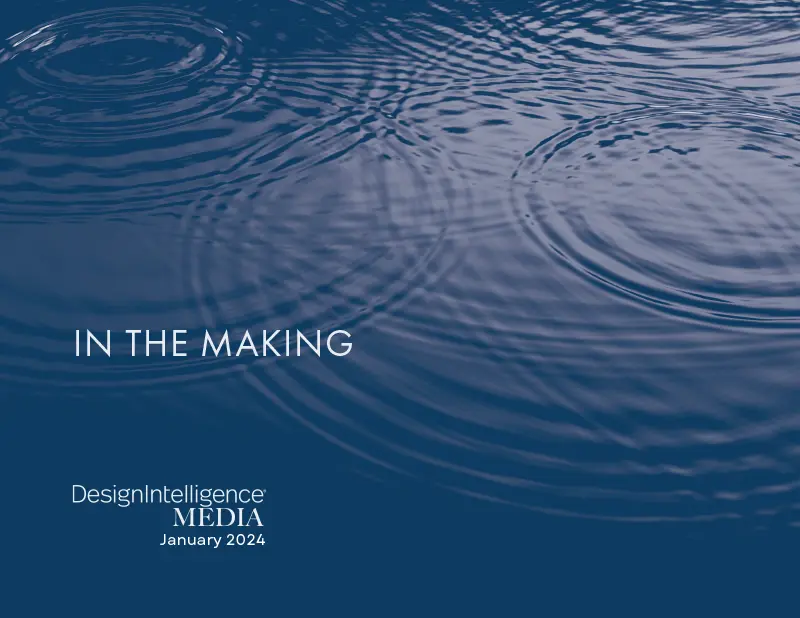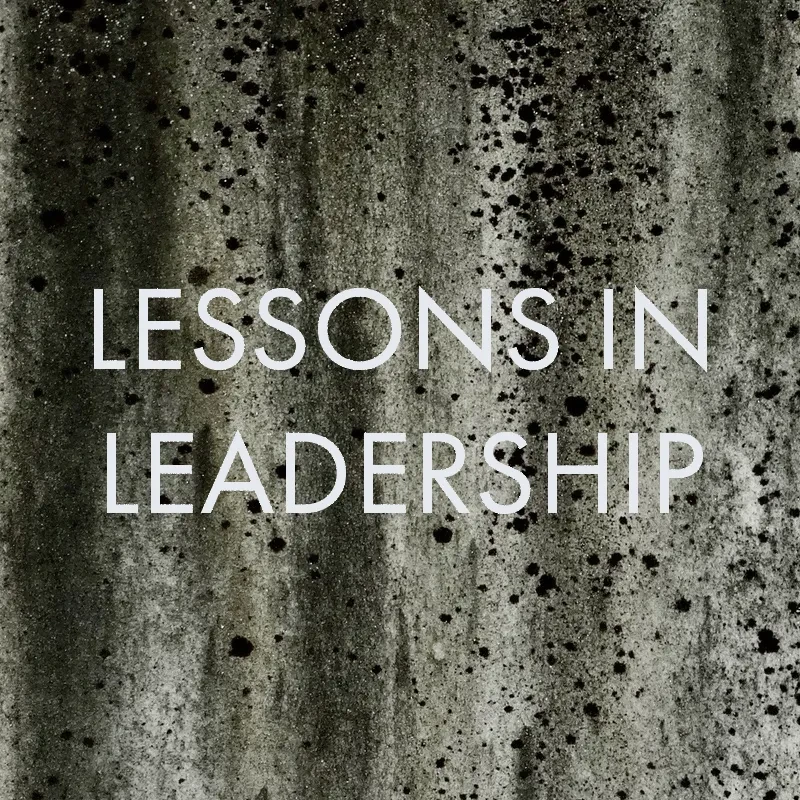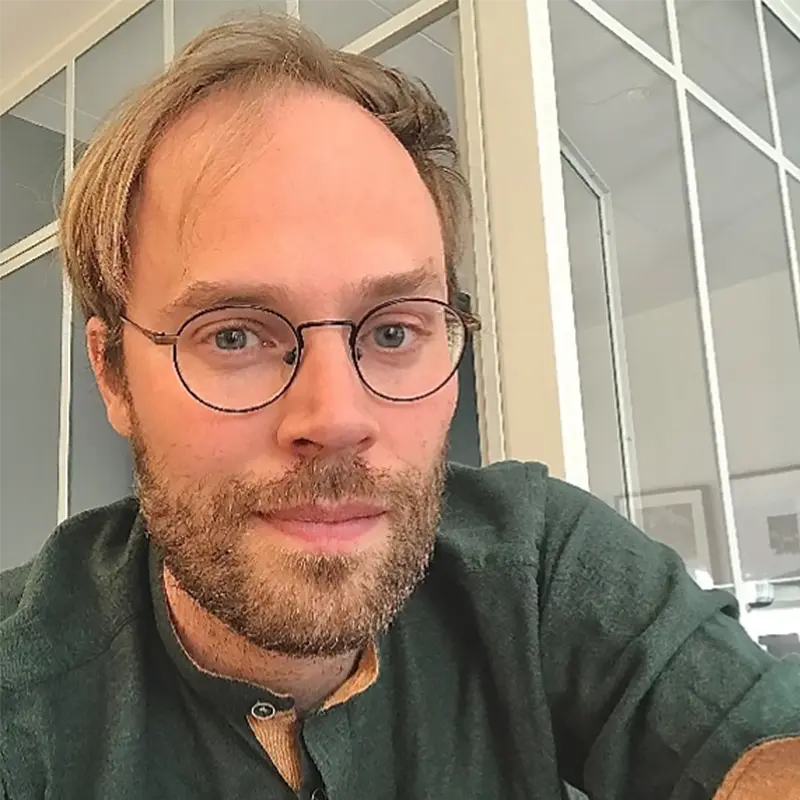
In the Making
Gustav Magnusson
Founder of For Elize, Urban Planner, Urbanist Philosopher and Author
January 31, 2024
Let us not lose sight of our own existence within the recipes for change. Selected reflections and essential insights on conversations with 100 urban thinkers.
In this article I offer some insights from my current work-in-progress, an urban anthology book entitled: “Keynote Conversations – 100 interviews for Reinventing the City.”
A collection of interviews, each condensed to one page, it resembles a Pecha Kucha-style urban planning festival in written form. Featuring interviews with directors of urban planning, urban advisers to mayors and world organizations, esteemed professors, award-winning architects, urbanists and world experts, it also includes the perspectives of planning students and children.
Far from a summary, this article offers a baker’s dozen of reflections inspired by these conversations on what the collected viewpoints may teach us about innovation, technology, urban environments and those who live and work in them.
Being Present: First Life, Then Buildings
In “Keynote Conversations,” a singular wisdom emerges: We must remember to be present. Society and its planners often forget our human essence, but we are more than abstract, passive, theoretical narratives — we exist here and now. We make decisions and take actions that, in turn, shape future context.
Urbanist Jan Gehl’s globally recognized notion, “First life, then buildings,” embodies this sentiment, shared by many of the book’s thinkers, while affirming the priority of our human existence over other structures.
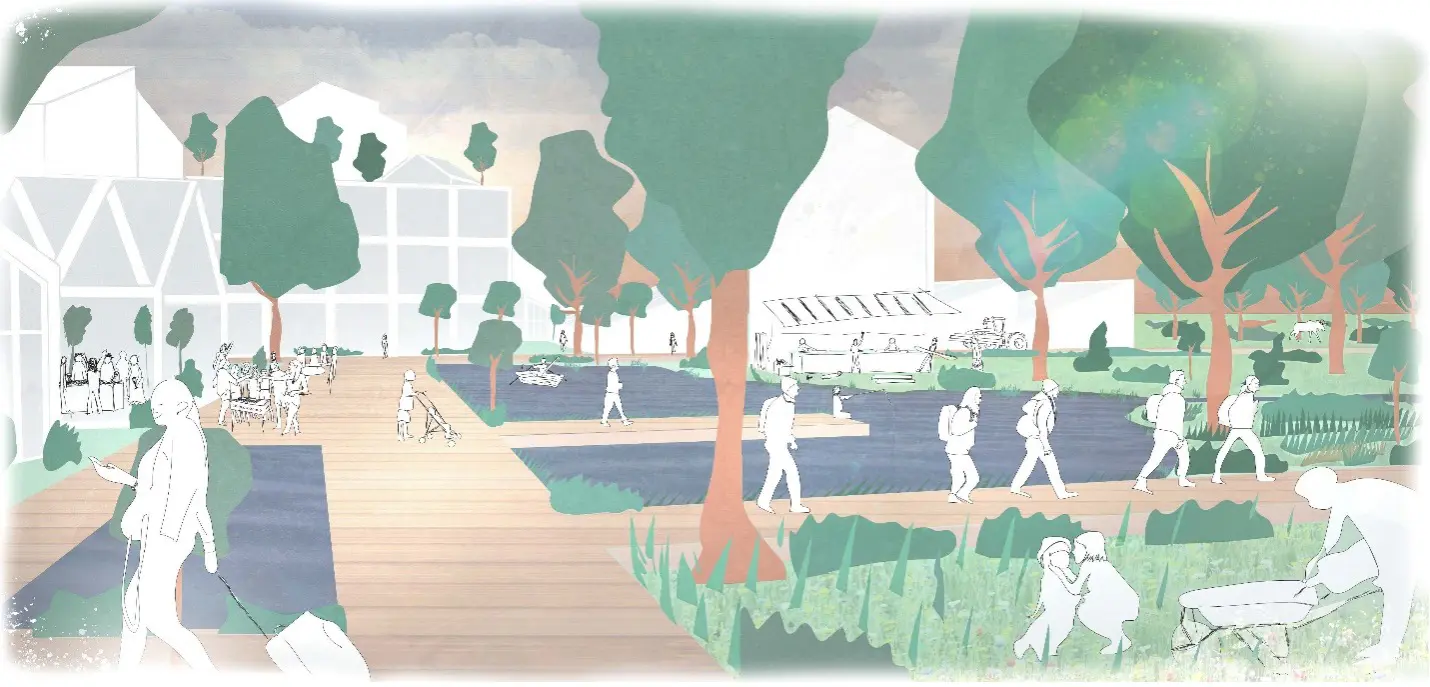
Nature and city are the same – author image
Collective Responsibility
Beyond integrating ourselves into this human-centric world, many of the book’s thought leaders argue for our collective responsibility. Our commons encompass all we share: for example, our culture, the air we breathe, the water we drink and our essential natural resources. To lead a truly meaningful, sustainable and fulfilling life, we must acknowledge the importance of more than just our individual humanity.
Human-Planet-Centered Perspective
From Mette Skjold, the head of the global landscape practice SLA in Denmark, to Michela Magas, adviser to the president of the European Commission and many others, a recurring theme emerges: the shift required from human-centered thinking to a human-planet-centered perspective. This transformation transcends linear, human-centric views and recognizes our role as interdependent contributors within a complex ecosystem.
We must remember to be present. First life, then buildings.
Hybridization Possibilities
I had the pleasure of conversing with Djamel Klouche, a renowned French landscape architect, urbanist and recipient of the prestigious “Grand Prix d’Urbanism” awarded by the French national government for outstanding contributions to urban planning. Klouche urges us to abandon compartmentalization and explore the possibilities of hybridization. Are rural and urban landscapes truly distinct, or are they interconnected? Klouche compellingly illustrates this point with a fresco painting from Sienna, Italy, dating back to 1337-1339, revealing our historical interdependence on a unified landscape.
Must we emphasize the distinction between the digital and analog realms? he asks. Let’s contemplate how to blend scales, from vast metropolitan regions to close details. Perhaps we inhabit a singular, interconnected world?
Good planning is about “designing with purpose to our needs.”
Mindfulness
Higher-level urban design is fundamentally about mindfulness. Isn’t planning essentially the art of creating a space for our shared existence to flourish?
Too often our fixation on the details positions them at the forefront. For instance, we might initiate neighborhood street design by obsessing over how a garbage truck can navigate smoothly. The garbage truck’s convenience and “life” becomes the foremost concern, potentially relegating the human experience to a secondary or more distant priority.
The architecture industry is filled with these kinds of scenarios: prioritizing floor space ratios for maximum profit, followed by the realization that the newly constructed district lacks space for a school, necessary community services or green spaces. As growing families soon relocate to areas with schools and services, these same shortsighted development companies, driven solely by profit maximization, suffer financial setbacks as a result of their own short-term gains, and long-term community costs are far greater as the vicious cycle continues.
Constraints vs. Objectives
“First life, then buildings,” might be a better order of thinking, as Jan Gehl suggests.
Alain Bertaud, formerly a principal urban planner at the World Bank, wisely observes the need of a clear understanding of the distinction between constraints and objectives. According to him, mixing the two can lead to unintended and even disastrous consequences - such as pursuing poverty as a means of reducing carbon emissions. Instead, if we recognize greenhouse gases as constraints, we gain the freedom to craft more meaningful objectives. One such objective could be fostering a brighter future, providing the conditions for our societies to thrive and flourish.
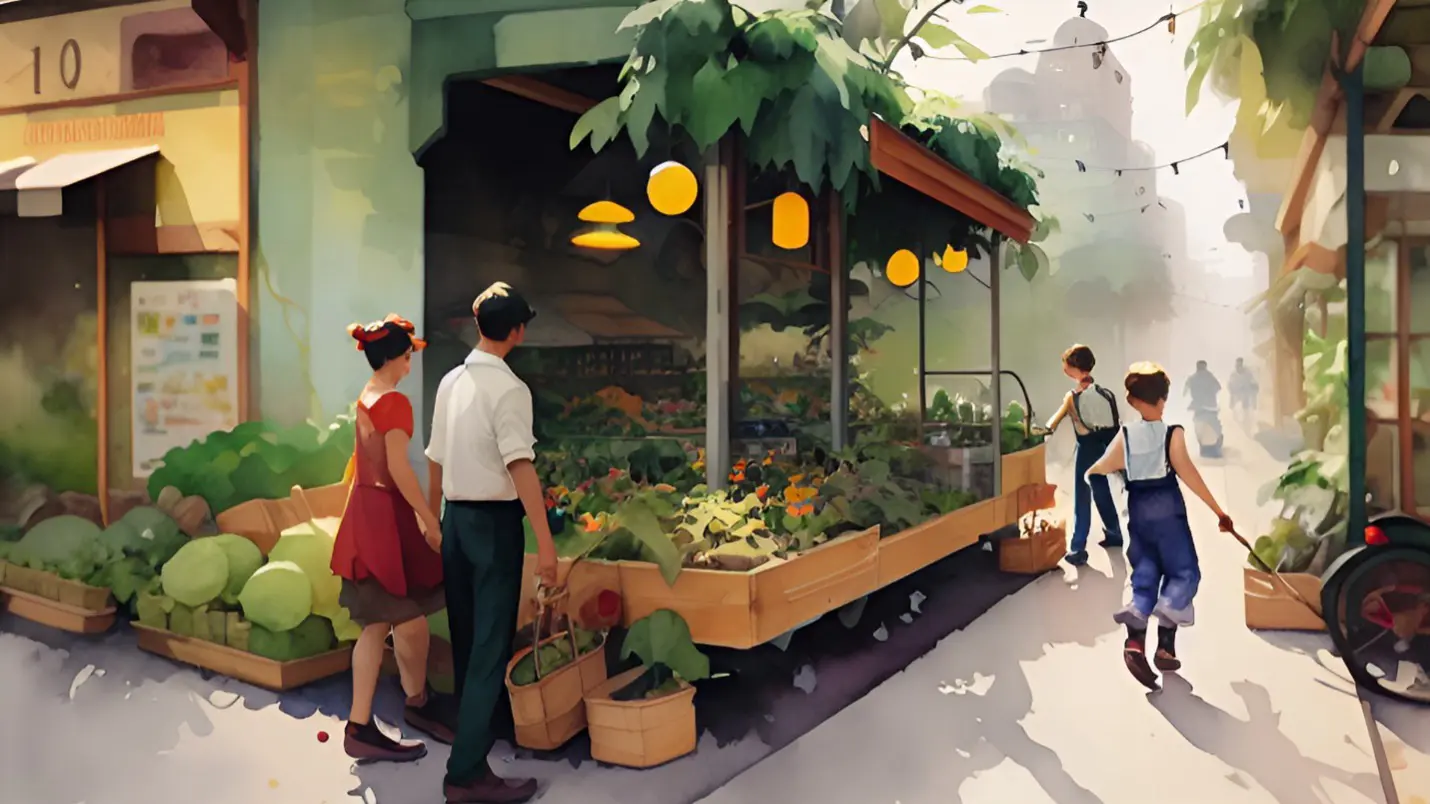
Is it city or is it rural lands, past or present?
Author AI-generated image via WOMBO Dream
Aspirations and Perceptions
Renowned Chilean architect Alejandro Aravena, a Pritzker Prize laureate, enriches these notions by highlighting that a prosperous society doesn’t result from urban development and progress. Rather, urban development and progress arise from the foundation of a good society. Shouldn’t this be our aspiration?
As we enter a new era often characterized as one of innovation, artificial intelligence, digitalization and a more intelligent future, it begs the question: Is such a future really about innovation, or is it, in essence, about our perception of our existence?
In truth, innovation has been our constant companion for thousands of years. As humans, we’ve long been accustomed to adapting and creating groundbreaking solutions, opening new “worlds” through innovation — from harnessing fire to inventing the wheel — and extending our senses by taming animals or crafting new means of software and technological support. Innovation is a timeless endeavor, but have we focused it properly?
One aspect we’ve largely overlooked is questioning our place in the world. Our self-perception has consistently revolved around a human-centered universe, evident even in the portrayal of gods across diverse religions worldwide, so often depicted as human-like.
We now inhabit a society where we consider our entire ecosystem as forming the bedrock of existence. As our role shifts in this ecosystem, we transition from isolated human bonds to interconnected aspects of our surroundings. In this transcendence, our world takes on deeper significance, moving beyond mere consumable resources. Through new perceptual modes, we can even regard new technology as integral to these interdependencies, possessing its unique cultural heritage.
Balanced Existence
In my conversation with Professor Guillaume Ethier at the Université du Québec, in Montreal, Canada, he suggests that the history of digitization spans the past 10, 20 or 30 years. Examining the evolution of digital public spaces reveals a trend of growing disconnection from ourselves coupled with a concurrent increasing connection to the digital realm. He advises that this trend will continue with smart cities, as constant connectivity intensifies this shift.
Ethier envisions a world where technology isn’t our opponent. Instead, he seeks a harmonious coexistence between the digital and the analog city. In this vision, the analog city complements our already established digital experiences by additionally offering us the means to reestablish connections with ourselves and our surroundings. Our goal is to live in a world where we can embrace both the digital world and inner mindfulness, fostering a balanced existence.
Integrating Humanity
Carl Heath, a researcher at Sweden’s RISE Institute and an educator for the Psychological Defence Agency in Sweden, points out the coexistence of digital and physical public spaces in our urban landscapes and lives as well. Notably, these two realms share common challenges and questions around accountability:
- Who constructs our environments?
- What motivates their actions?
- Are these spaces created with transparency in mind?
The objective, Heath says, should not revolve around accumulating attention, whether measured by social media clicks or the height of skyscrapers. Instead, our aim must be to integrate our humanity into the equation. What constitutes a meaningful existence in these spaces? In his words, good planning is about “designing with purpose to our needs.”
We construct society with our time, and we need to have time to be shy, to shape the relationship we need in order to build society.
Caring for Our Commons — and Emotions
In a concluding workshop, I joined Ewa Westermark, a director at Gehl Architects in Copenhagen, to delve into the shared themes emerging from the book’s interviews.
Our still-ongoing discussions emphasize the importance of caring for our commons — our shared resources encompassing nature and culture. This idea extends beyond mere ecological sustainability. It’s about uncovering the fundamental requirements for our collective existence.
Within our commons, we may give space for community, with a leadership rooted in inclusivity. Many of the book’s speakers, such as Fredrika Friberg, a Swedish expert in urban creation, emphasize the importance of guiding this process with emotional intelligence, recognizing the significant role emotions play in our actions.
As elegantly exemplified by Ellie Cosgrove from the London-based practice Publica, if many women express feeling unsafe in a particular environment and their actions reflect these emotions, those emotions serve as self-evident proof. Why, then, do we persist in requesting surveys to confirm their sense of insecurity?
Time
Leading with empathy and emotional intelligence can, in turn, unlock our human spirits, revealing our most valuable resource: our time. We often say, “Time is money.” But time exists in concert with initiative, incentives, culture, movements, politics, community and much more. In dialogue with the Dutch architecture firm ZUS in Rotterdam, they underscore that development frequently encompasses all these motivations. As emerging architects, ZUS made their mark in the Dutch architectural landscape by demonstrating their ability to creatively transform an extensive office complex amid the economic crisis of 2007-09, all without relying primarily on financial resources.
In truth, time is scarcer and more potent than money. As the insightful seven-year-old girl Elize wisely puts it:
“We construct society with our time, and we need to have time to be shy, to shape the relationship we need in order to build society.”
This is an attitude later echoed by English economy professor Guy Standing.
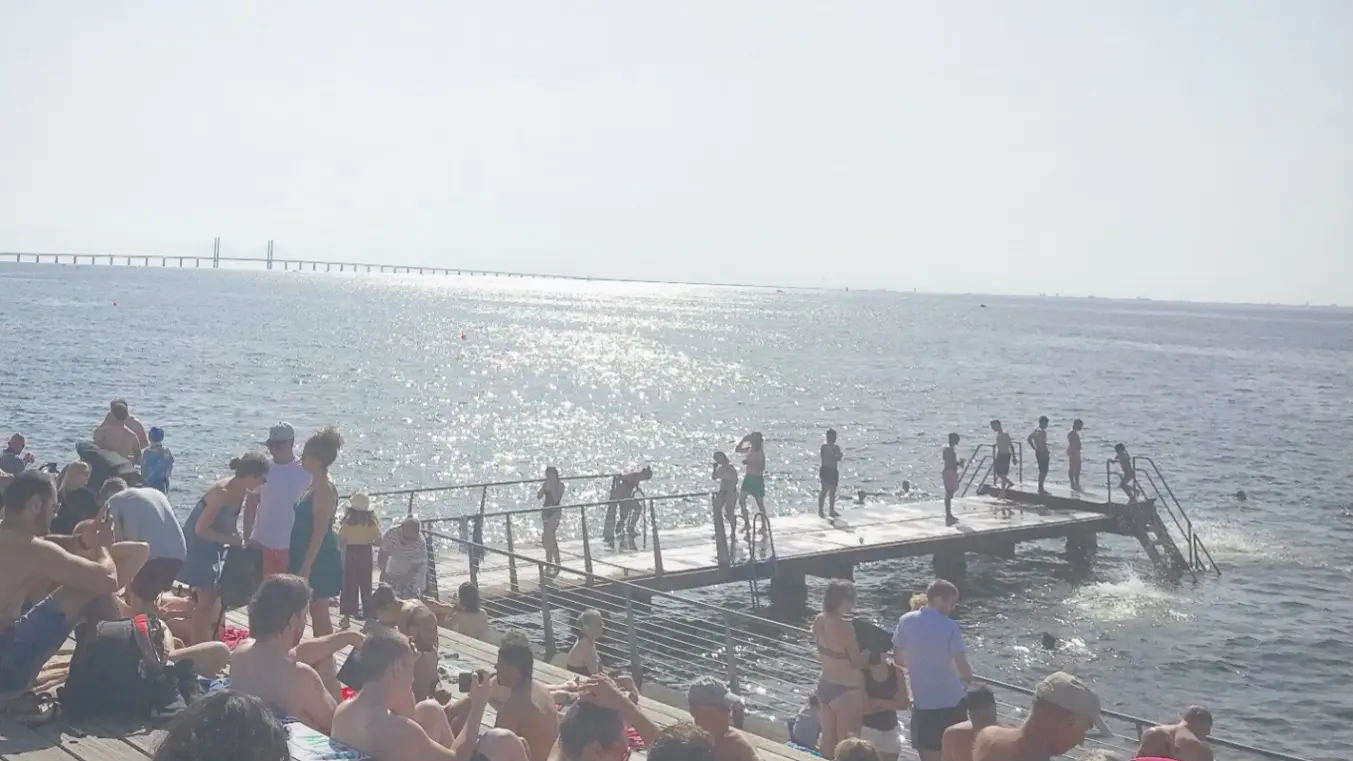
The Commons – downtown beach Maimo, Sweden, author photo
“In the Making”: Creating an Environment for Growth
Ewa Westermark summarizes many of these principles by saying: “the essence of it all is in the making.”
(“In the making.” Hmmm, I wonder.)
Westermark quotes environmental activist and author Joanna Macy to offer more insight:
“Action isn’t a burden to be hoisted up and carried like a weight on our shoulders. It’s an intrinsic part of who we are. The work we engage in can be seen as a form of awakening, a realization of our true essence, a release of our innate gifts.”
“How do we make together?” Westermark rhetorically asks. “We play our way forward. Toward what? A commons connected to our human spirit.” she continues.
(I look at her, perhaps still a bit confused.)
“I don’t know, it’s in the making,” she repeats, emphasizing that the answer is not the key concern here. Sometimes, residing in the landscape of the unknown might be an integral part of it all.
The beauty of urbanism can be inspired by UCL strategy professor and expert Vaughn Tan, who deals in “the unknown and uncertainties.” He believes that, rather than defining and deciding what will grow, planning and design should create an environment for growth. Tan believes we should view planners not as deliverable-producing workers, but as enablers, adapting to uncertainty and valuing the unknown with equal evidence as the known, unfolding the unknown future of every citizen.
(I contemplate; maybe that sounds like “in the making.”)
Could such an open-ended approach signify design as the art of enabling our active involvement in shaping our lives? A mindful and present presence, empowered to take action in the moment?
Perhaps the answers will come as we conclude these discussions and finish the book.
Perhaps the answers are “in the making”?
Gustav Magnusson, FPR/MSA, is the author of the forthcoming book “Keynote Conversations – 100 interviews for Reinventing the City.” He is an urban planner and urbanist philosopher who lives and works in Sweden, Denmark and France. The third generation in a family of architects and journalists, Gustav holds a master’s in spatial planning from the Swedish School of Planning and the Hafen City University in metropolitan development in Hamburg, Germany. He has experience with international architecture offices across Europe, 10 years with the celebrated French/Swedish architectural office Erik Giudice Architects, where he was responsible for urban planning in the Nordics, Benelux and beyond, as well as managing the firm’s research and development and the transatlantic urban network.
He is currently on a sabbatical to write “Keynote Conversations” and is the founder of For Elize, an urban practice inspiring the creation of more meaningful living environments spanning from urban design and conceptualization to theory. Educated in intercultural communication, creative processes and leadership, with experience in visionary, award-winning and international planning, analysis, strategy and communication, he teaches at universities, exhibits, writes and advises EU programs and boards and presents regularly on planning issues. Inspired by having lived in seven countries, he is driven toward an interdisciplinary social commitment to create conscious, present choices for the planet and people together in nonhierarchical collaboration.

